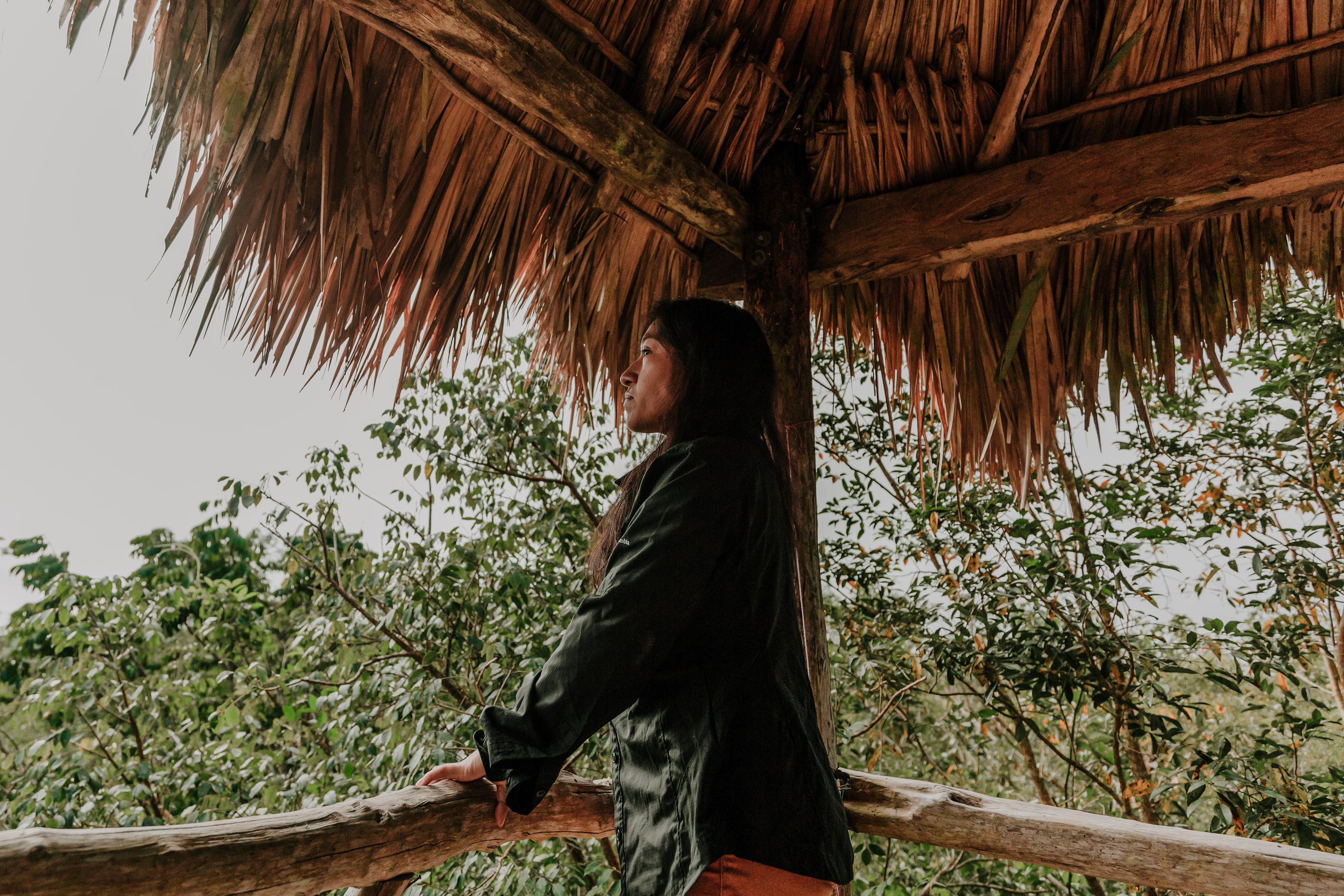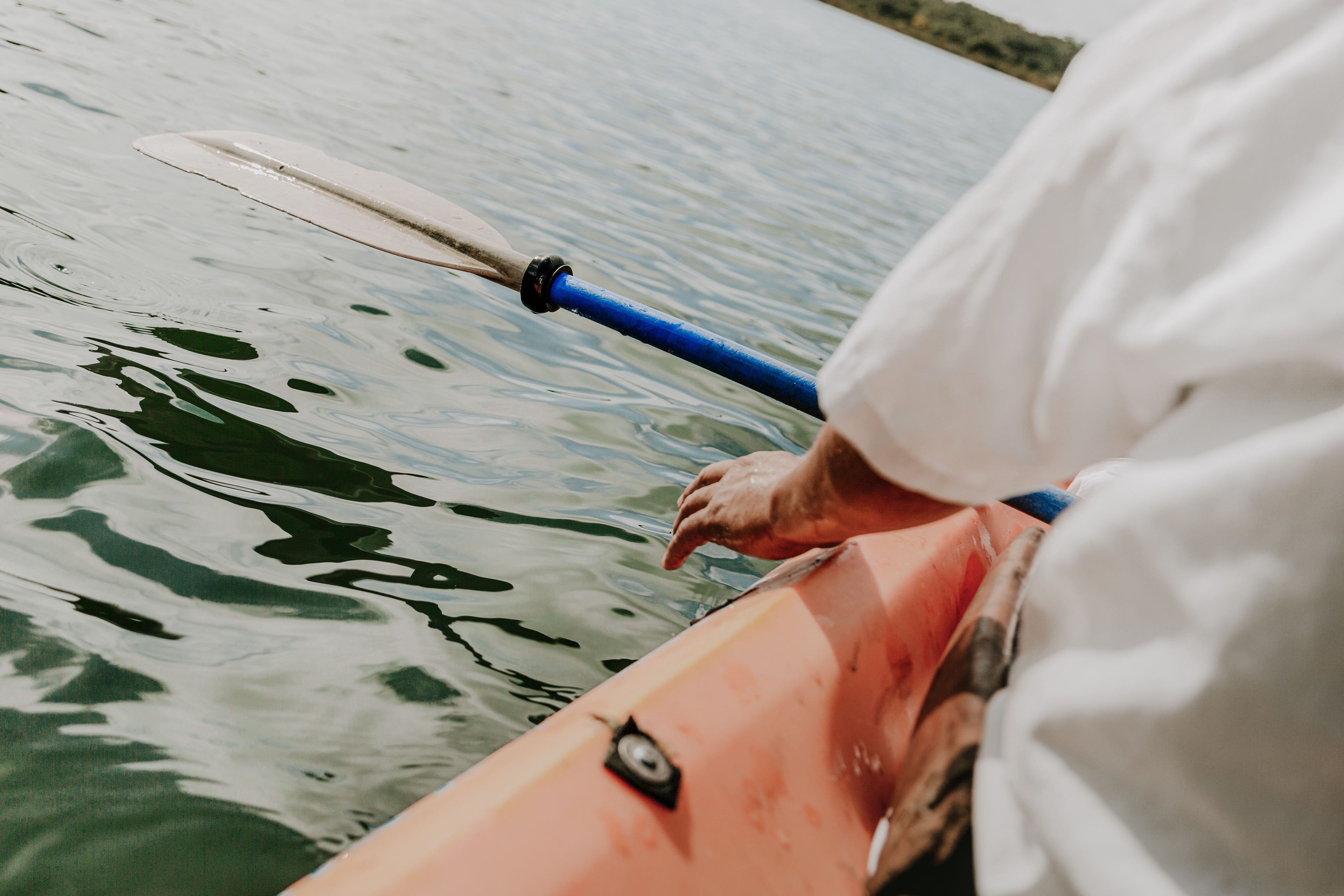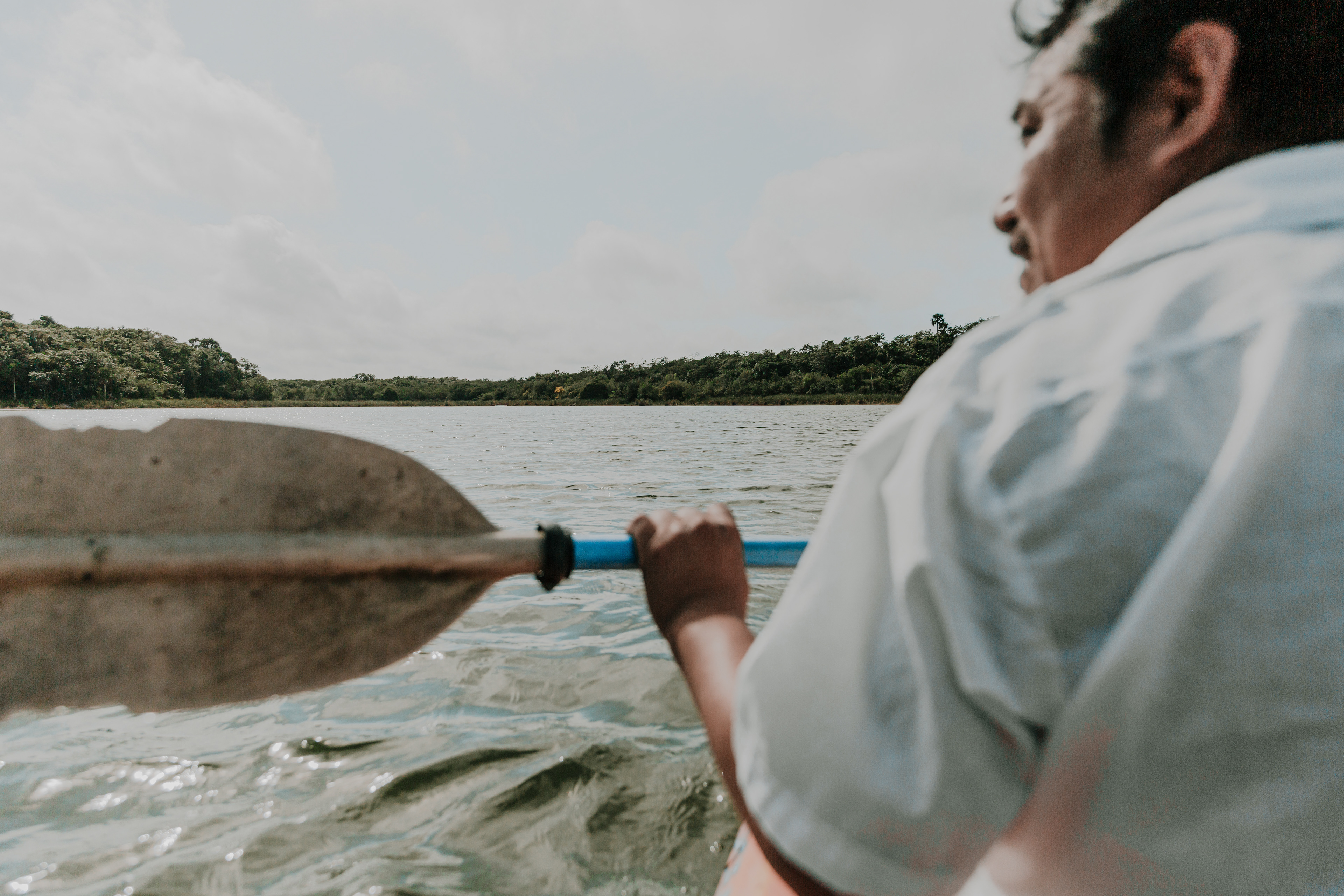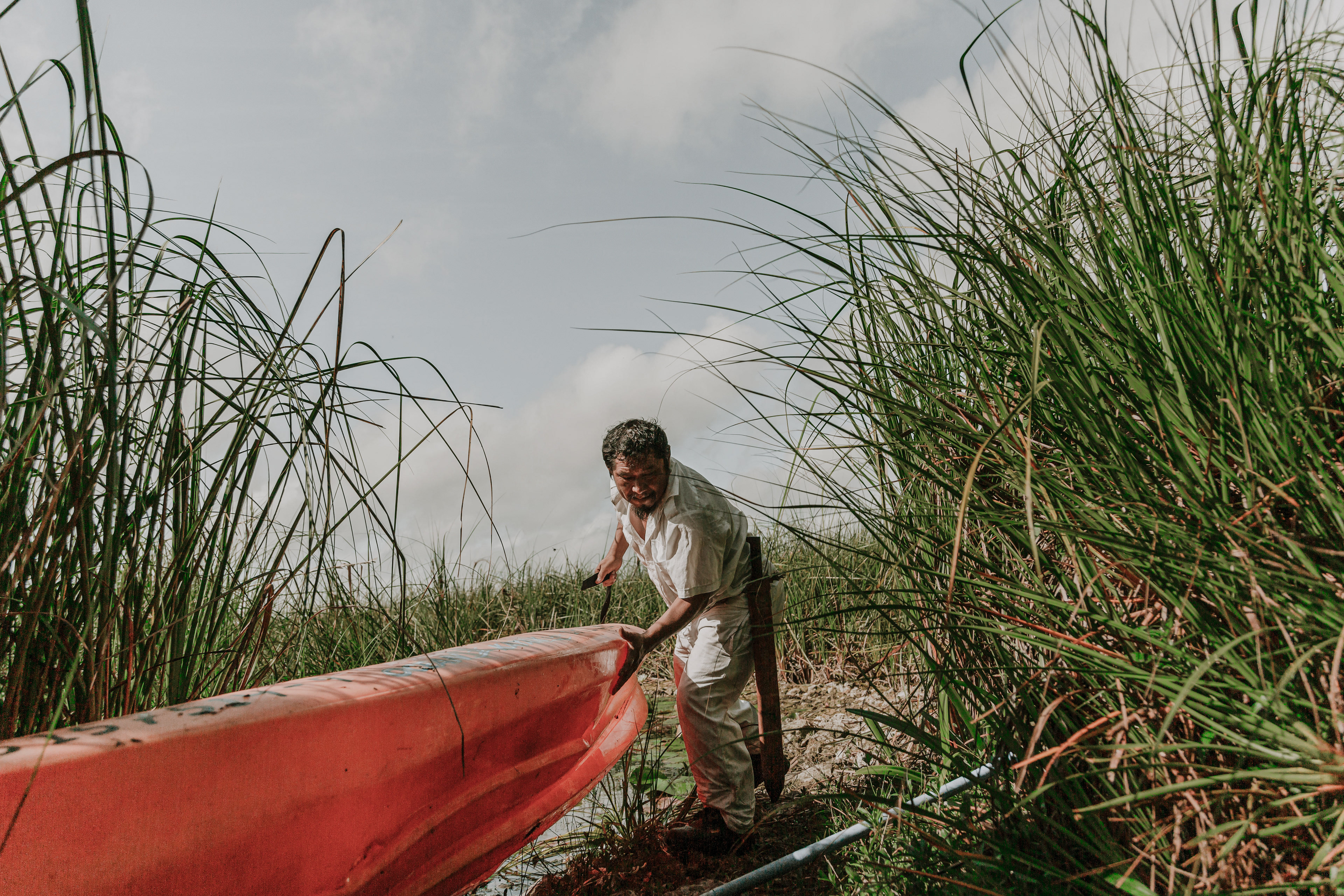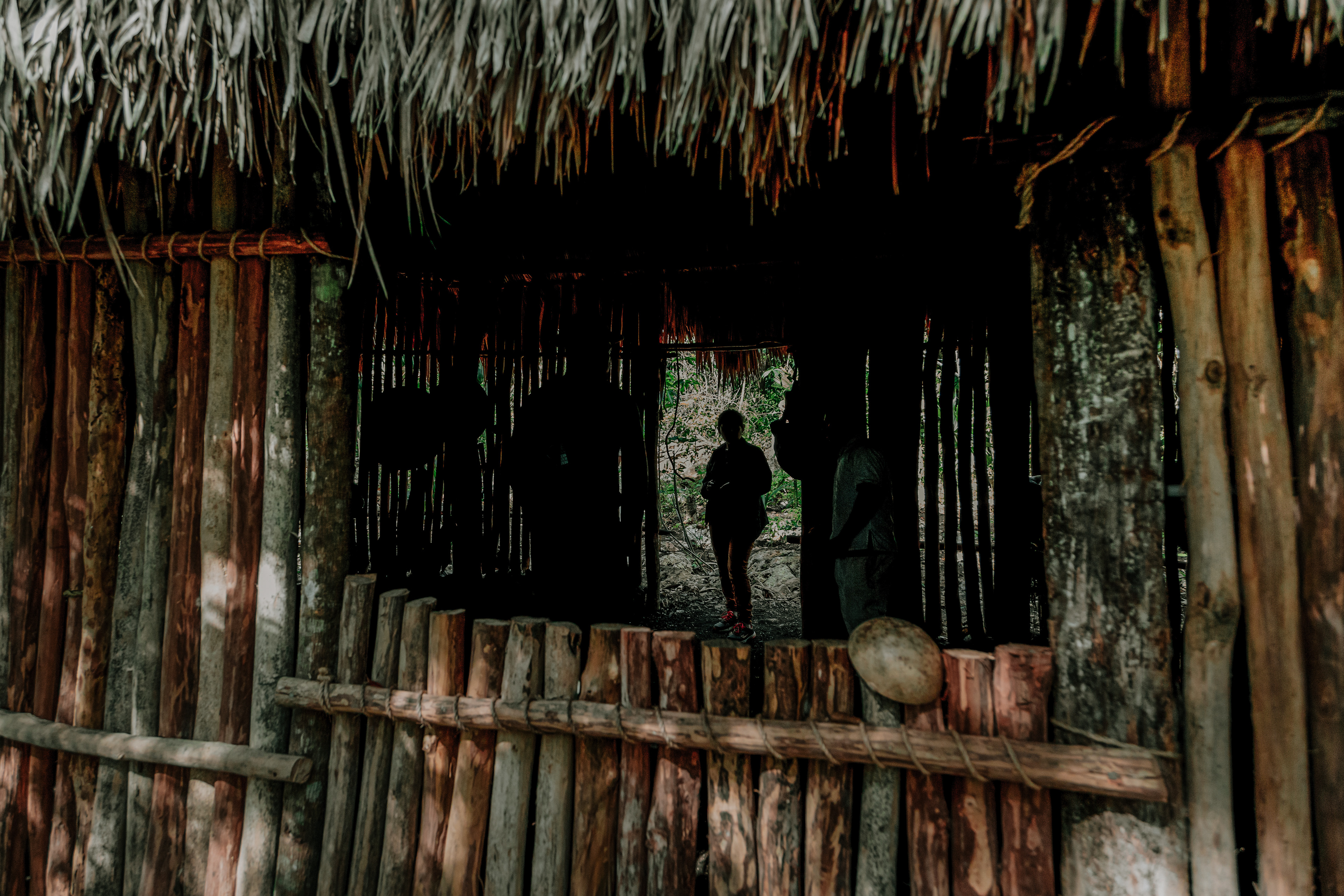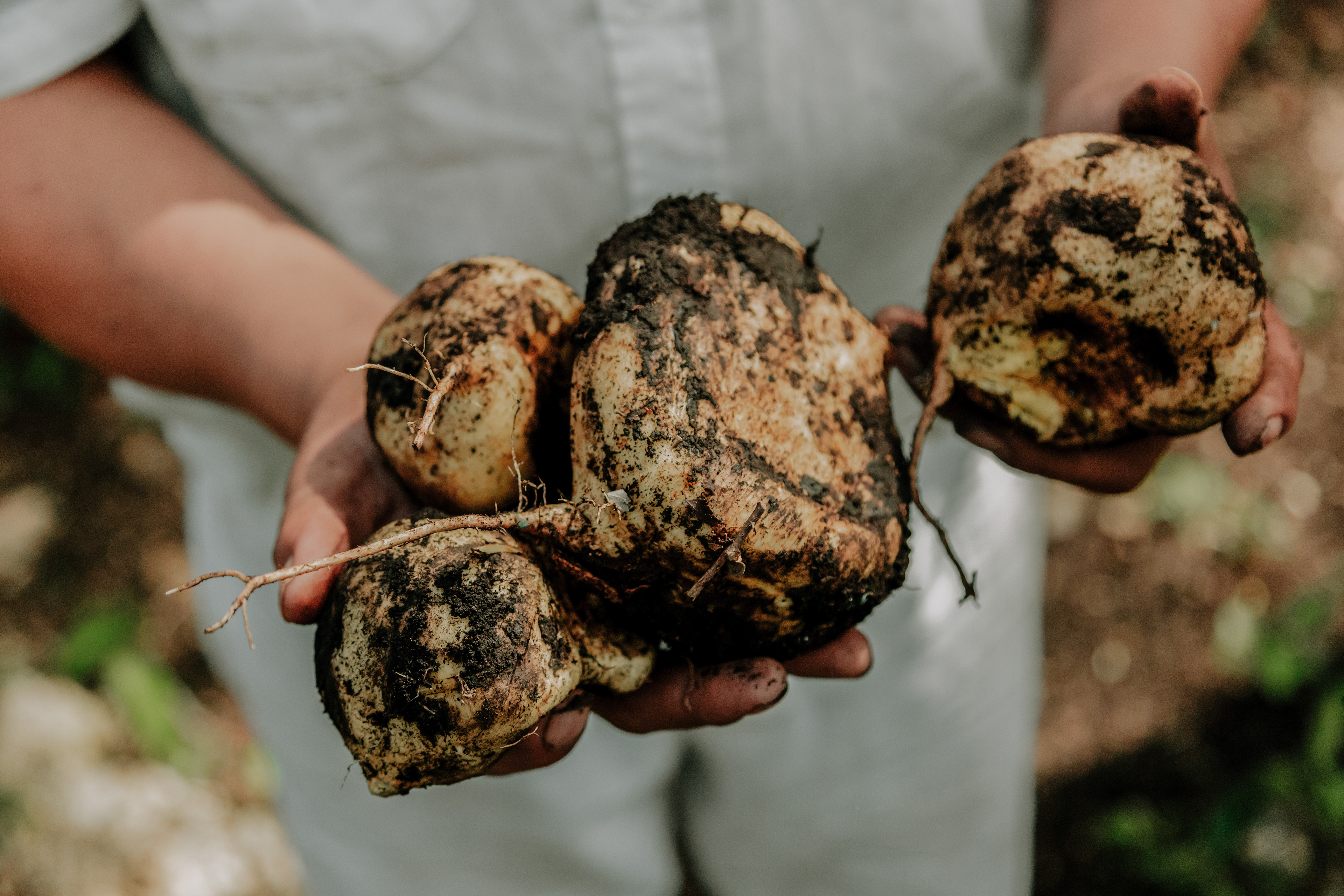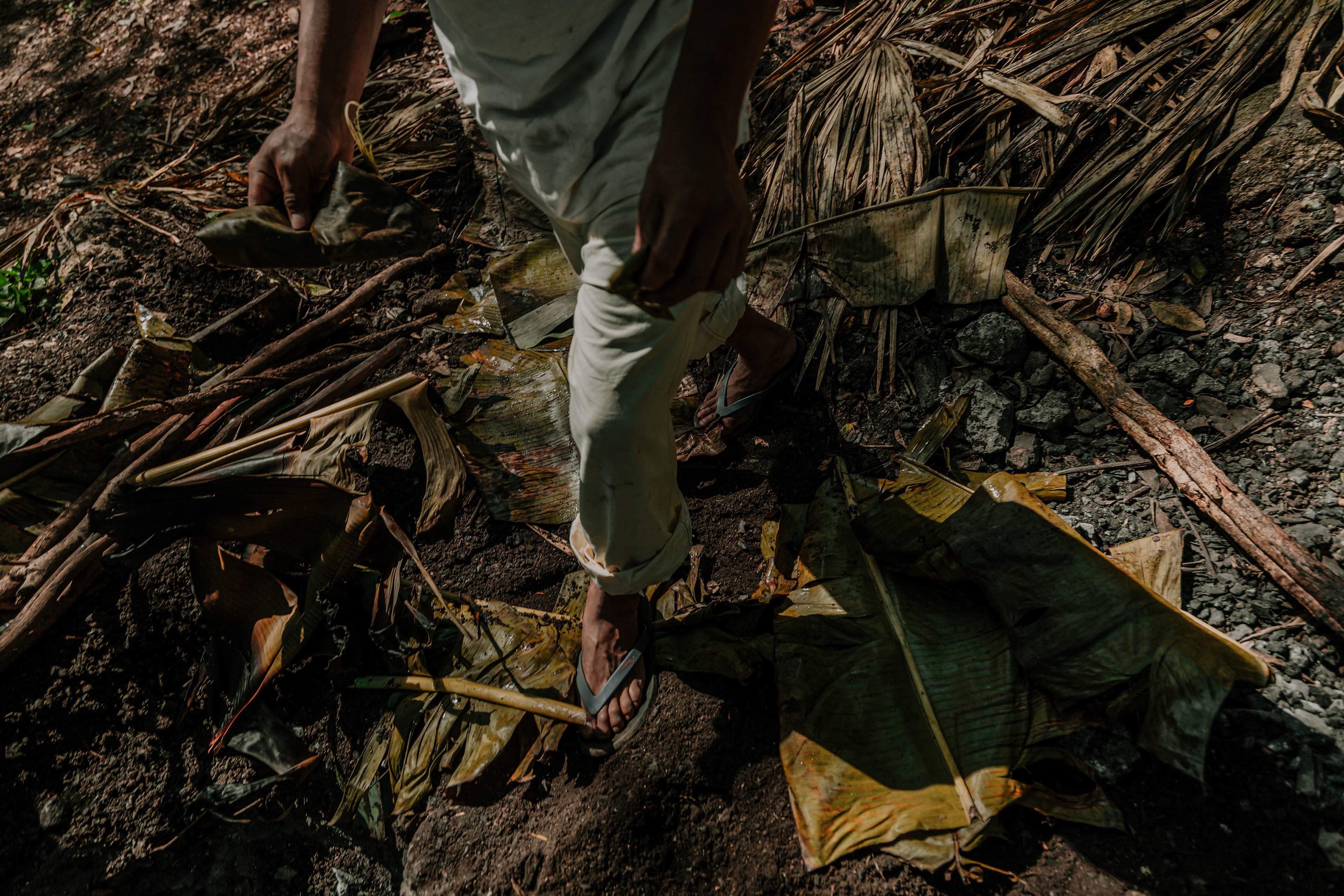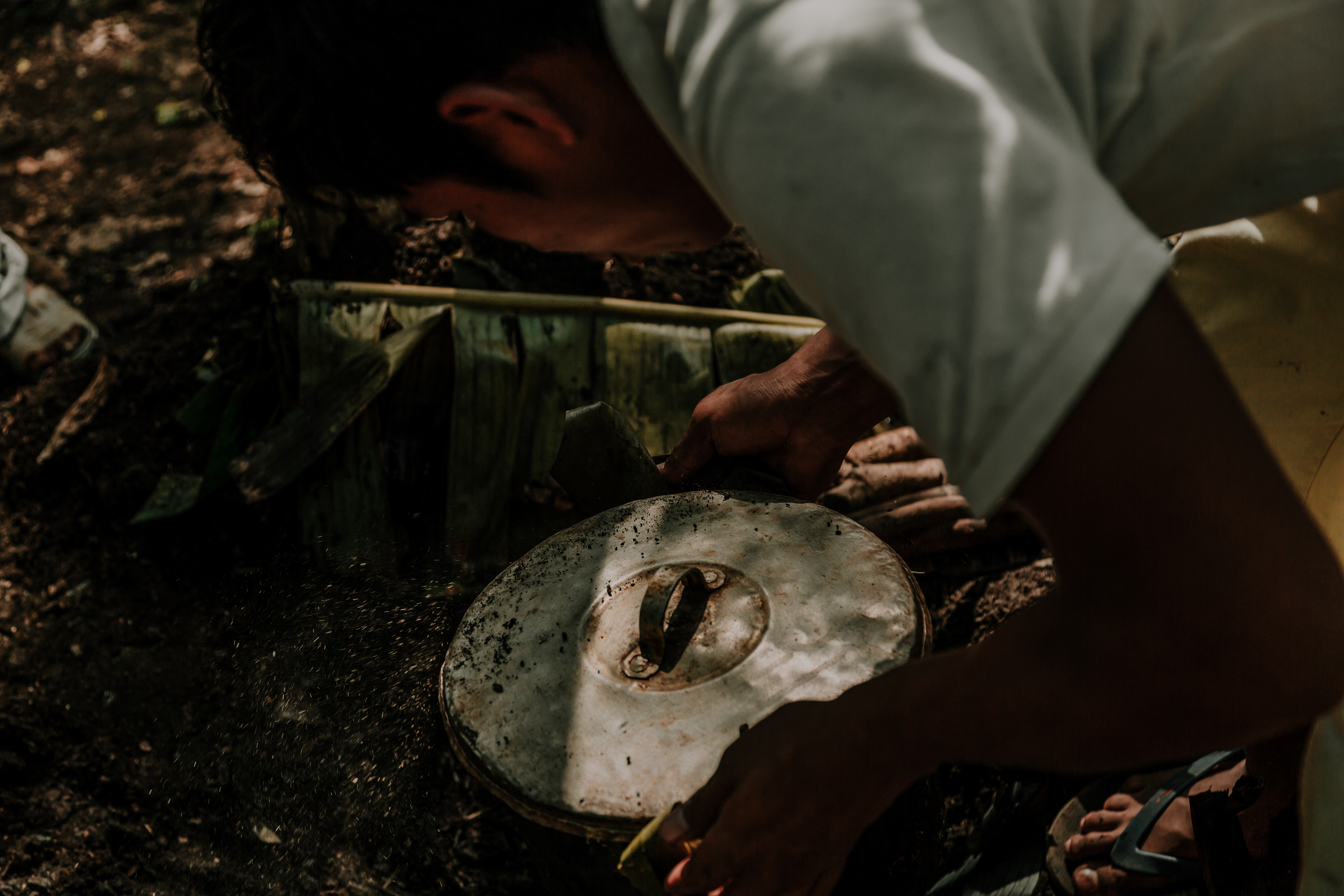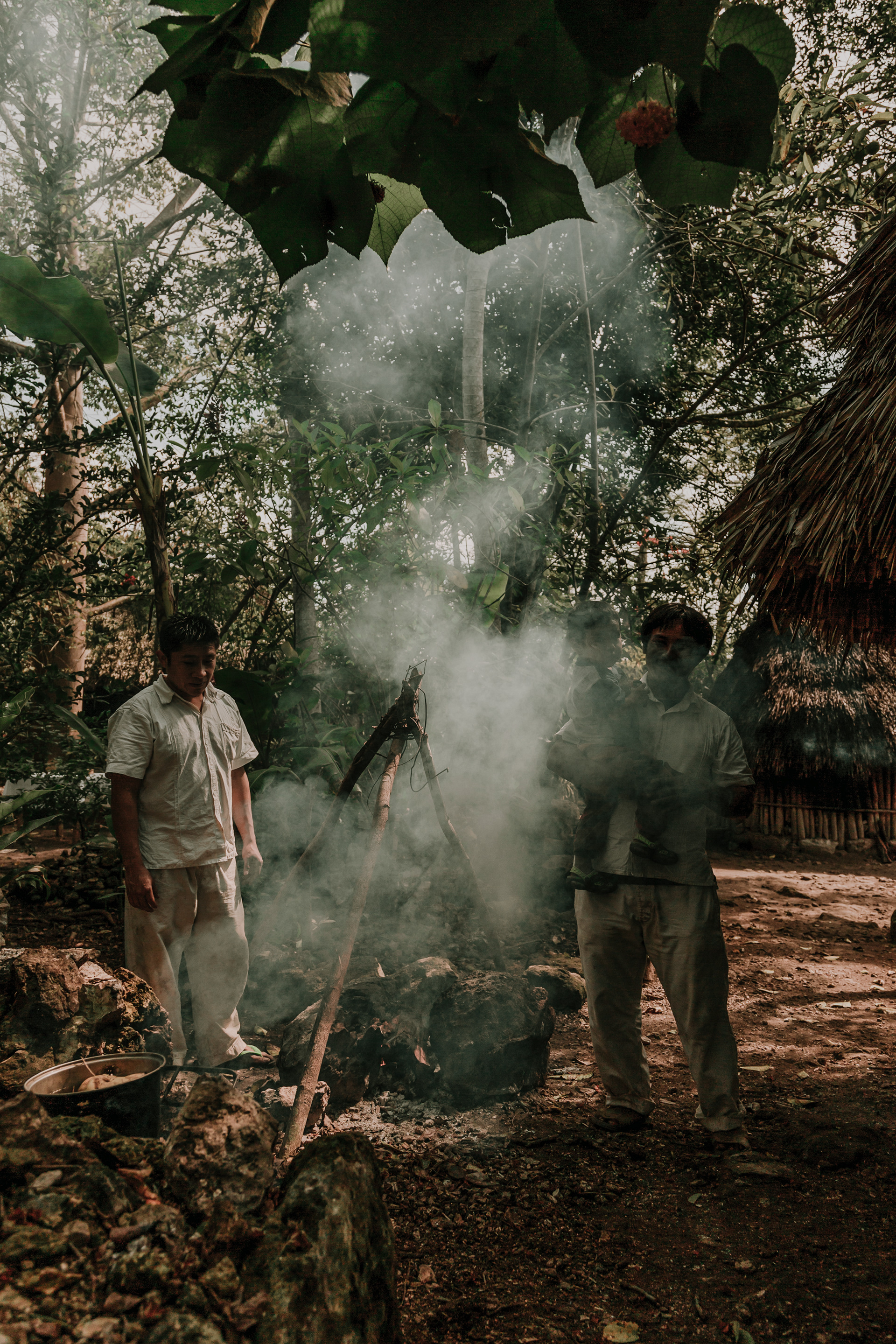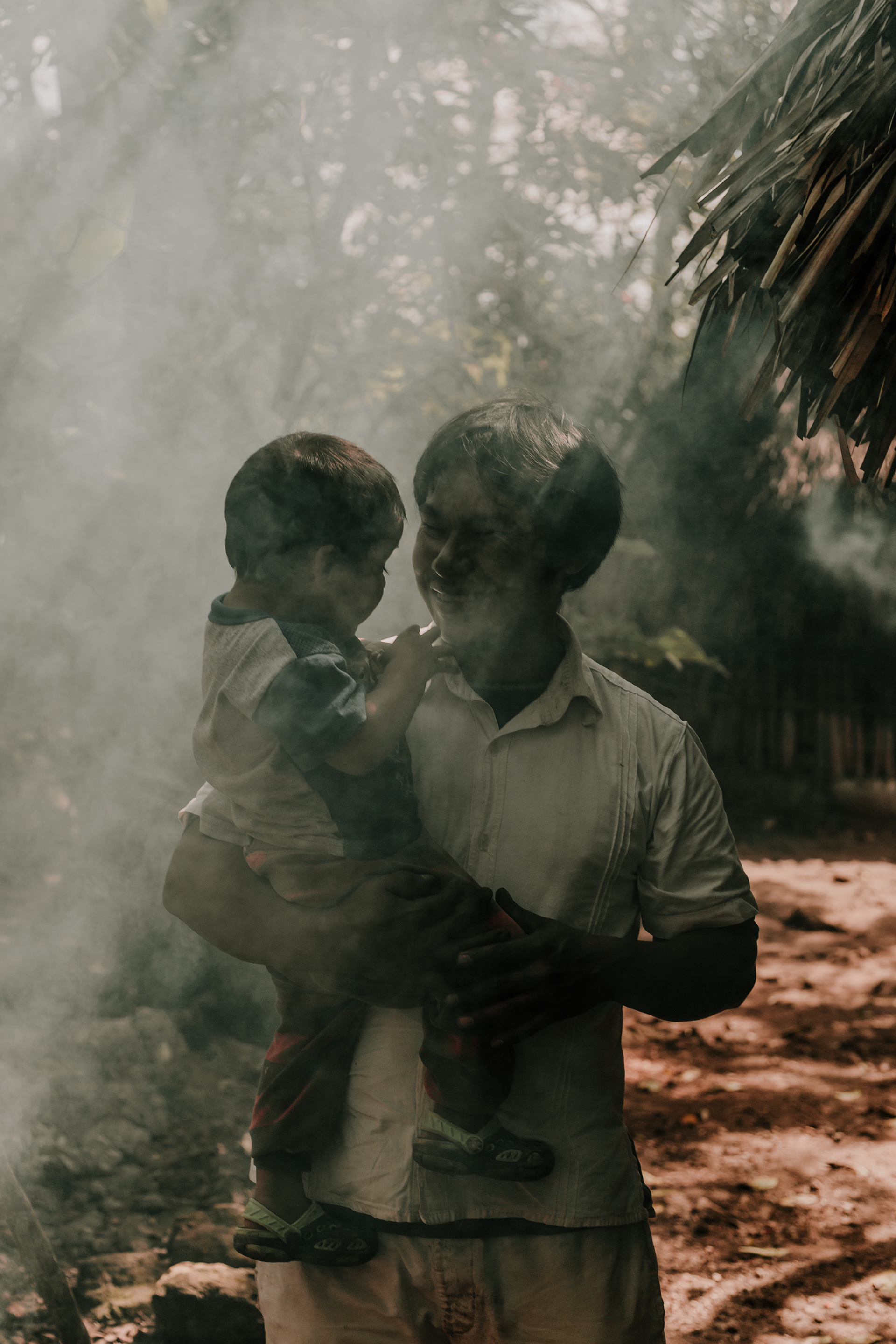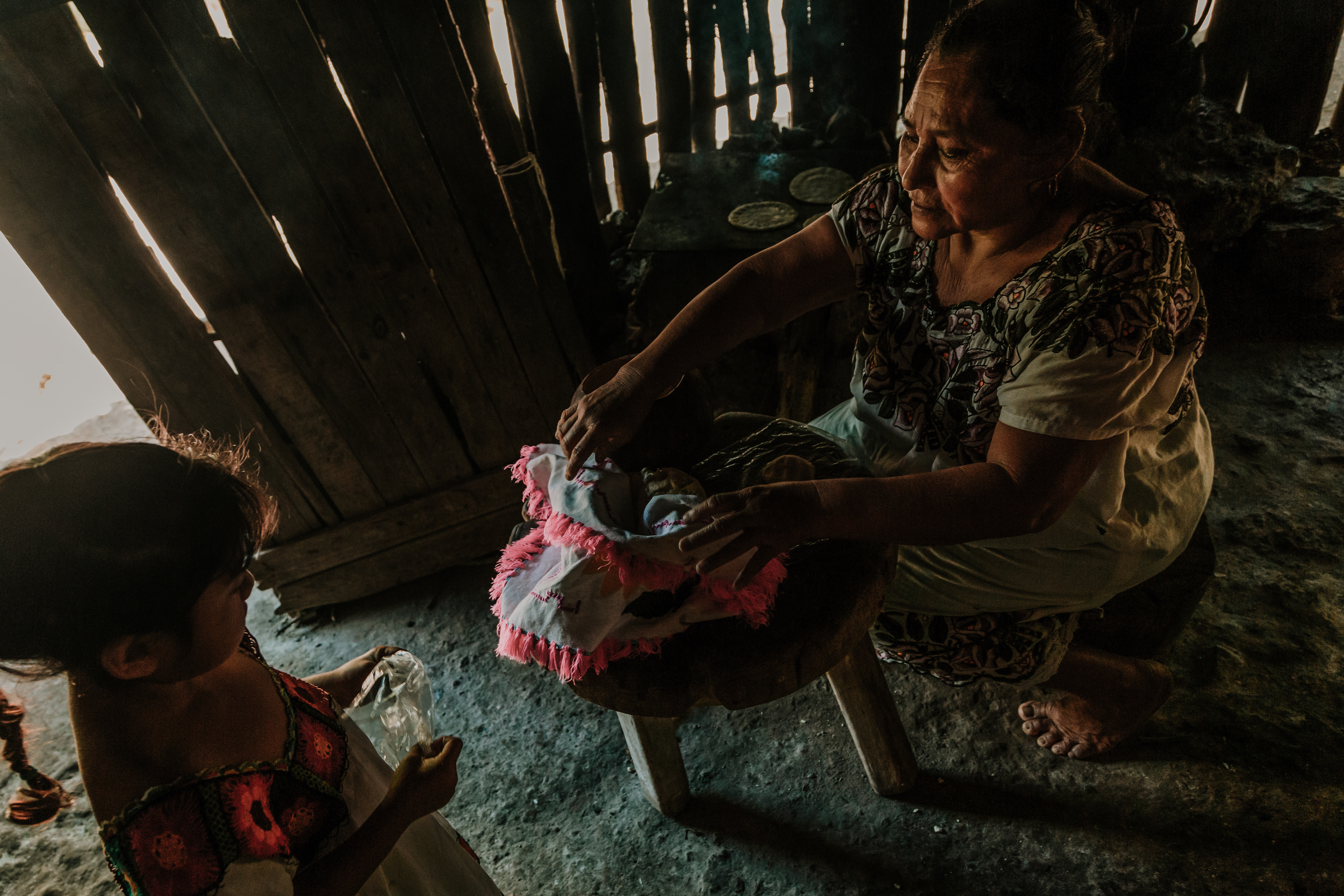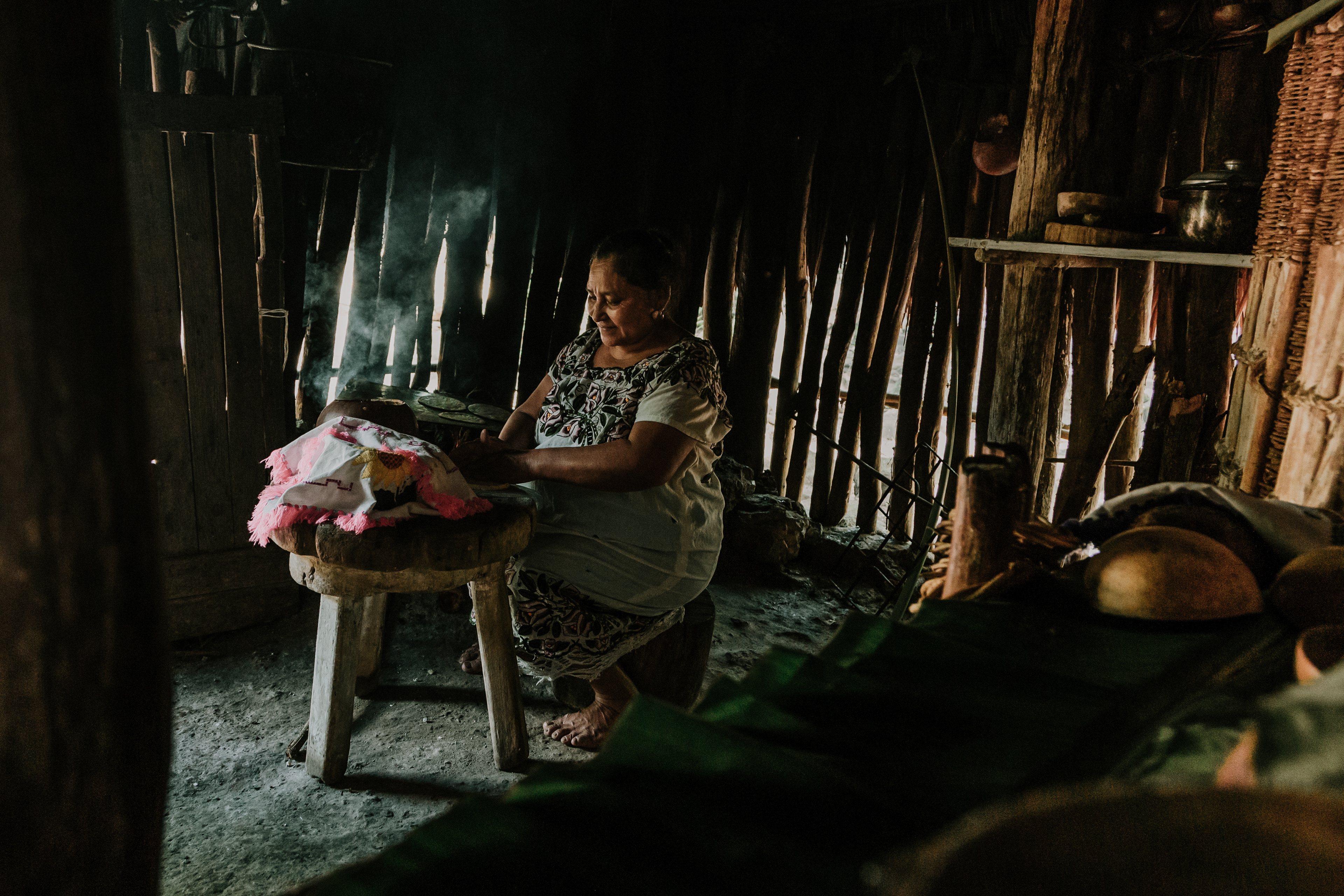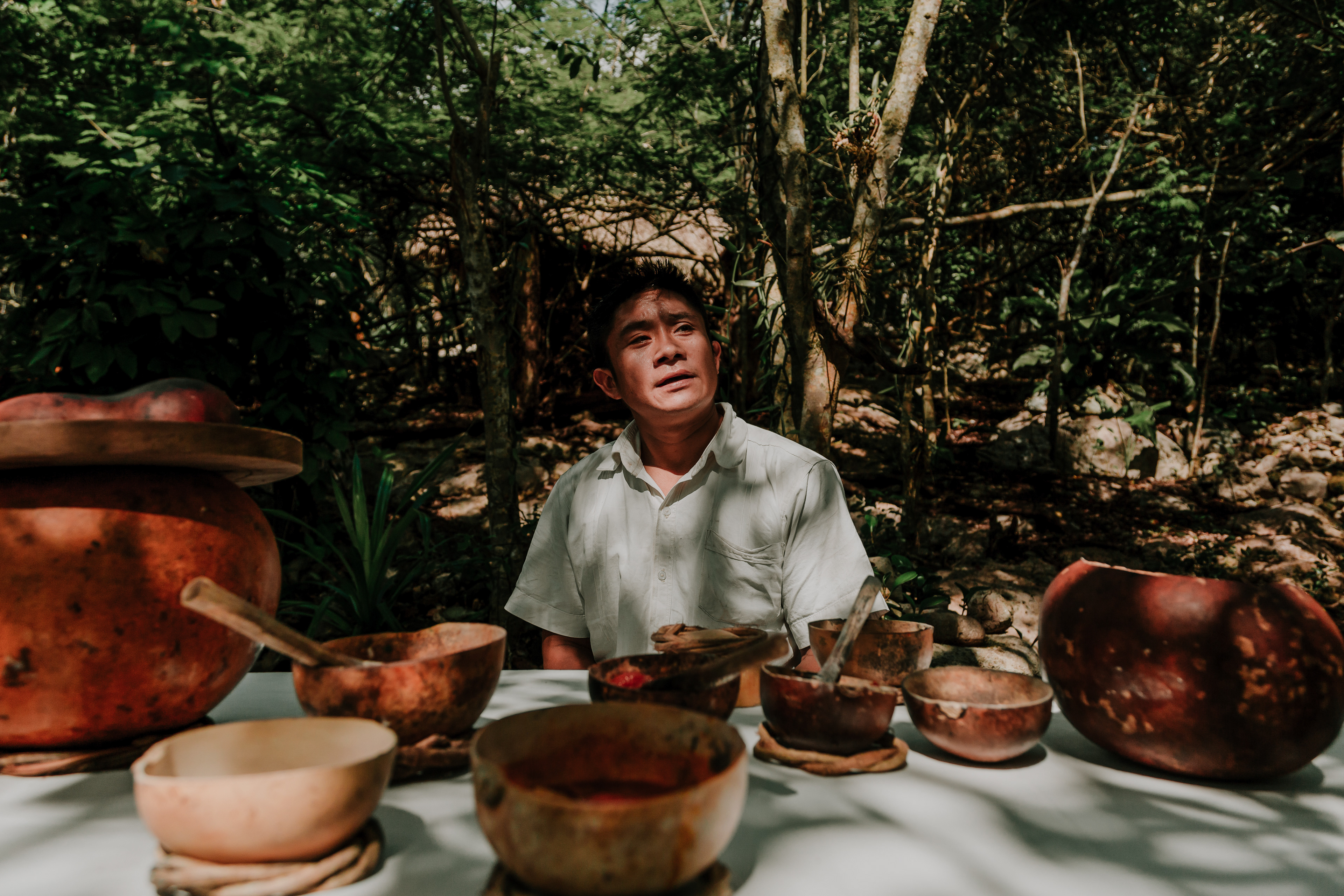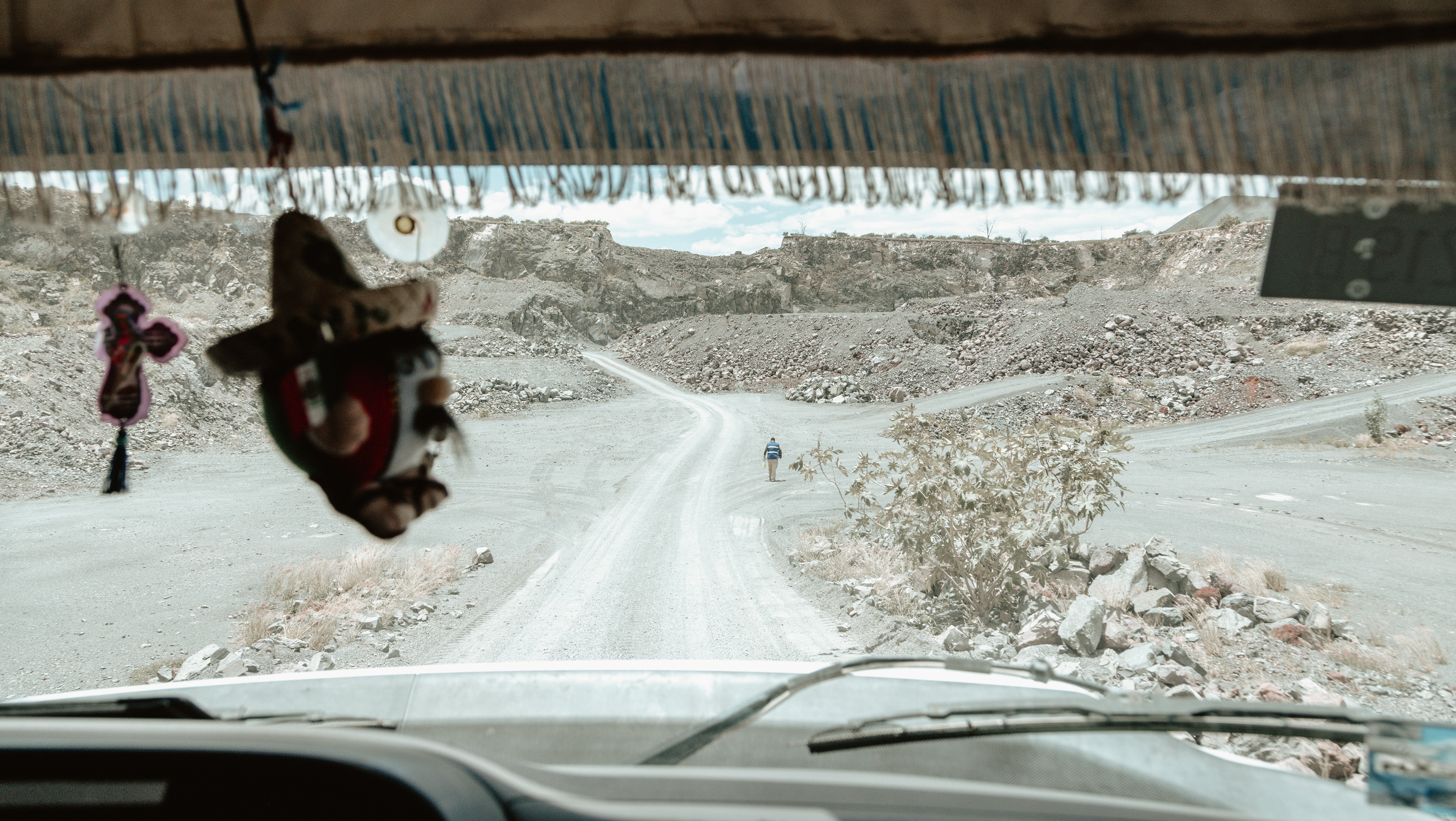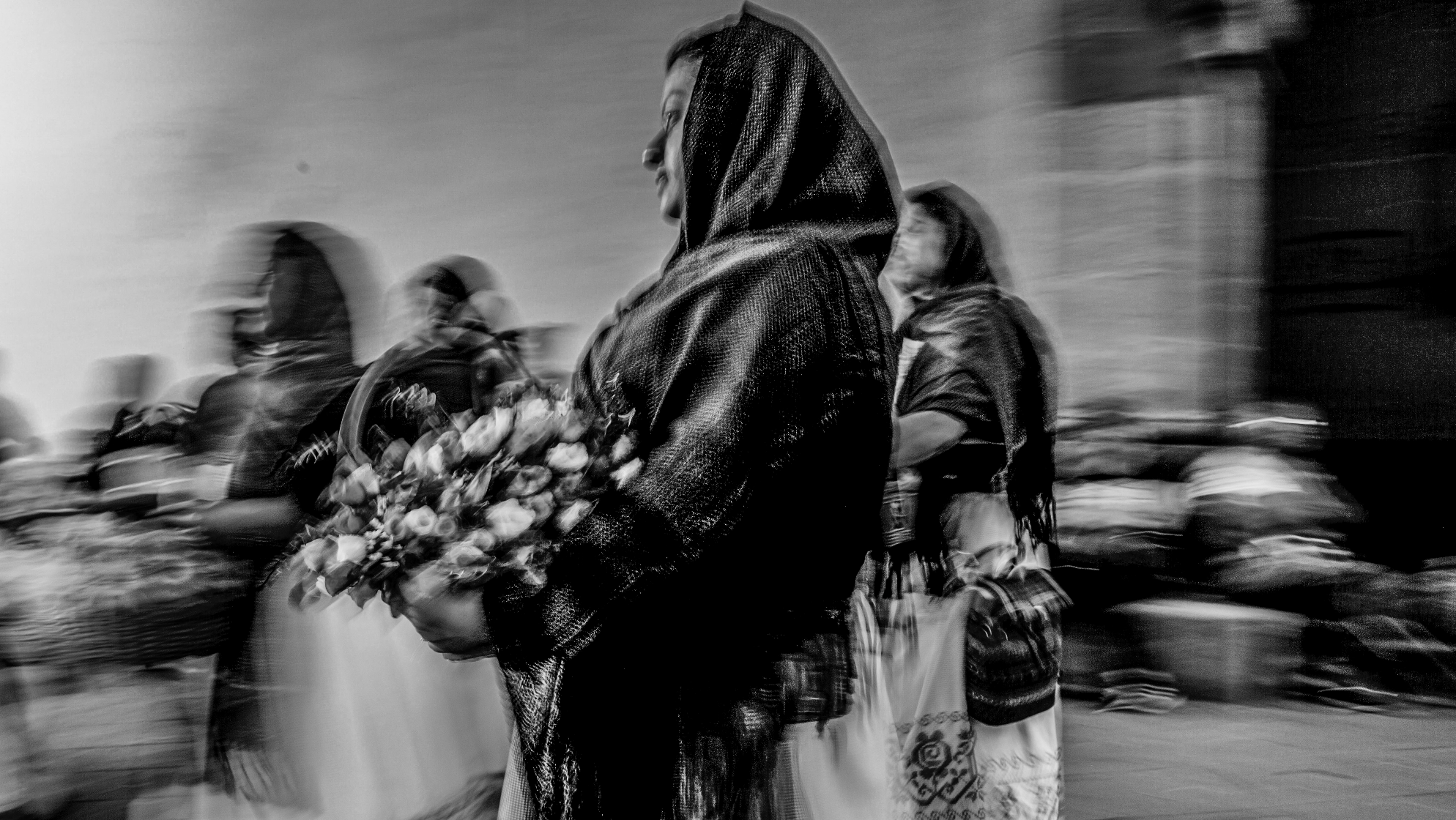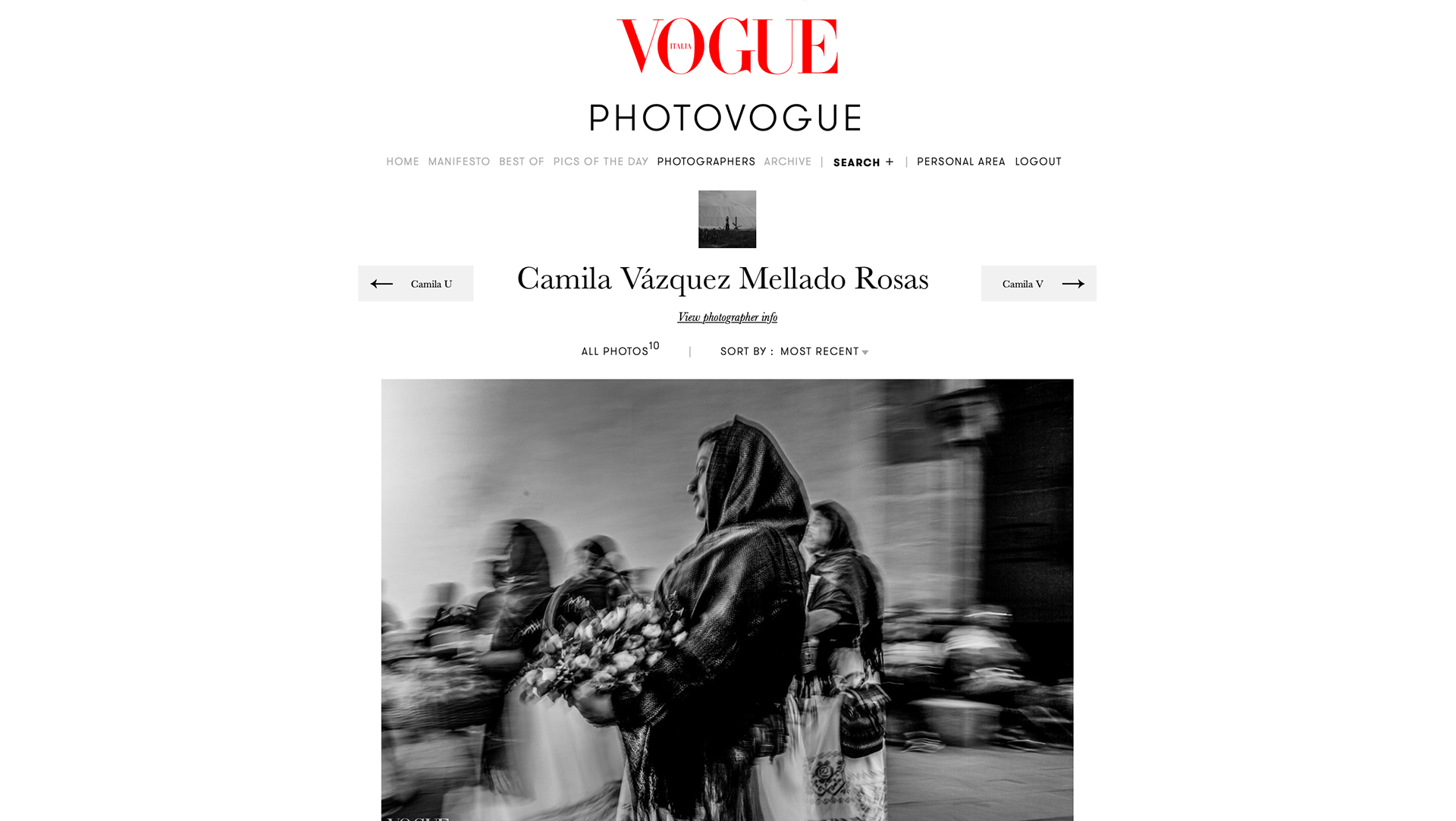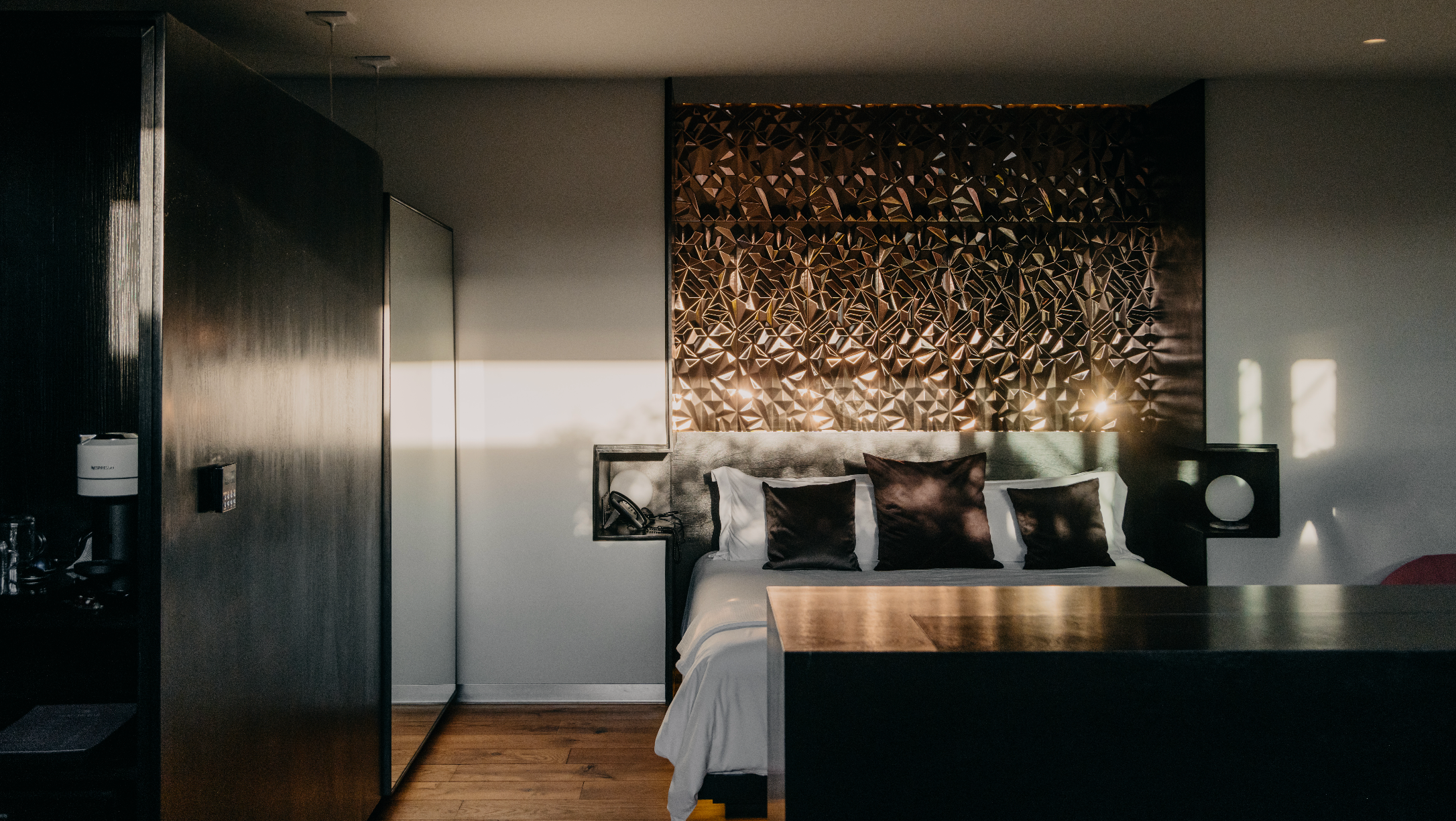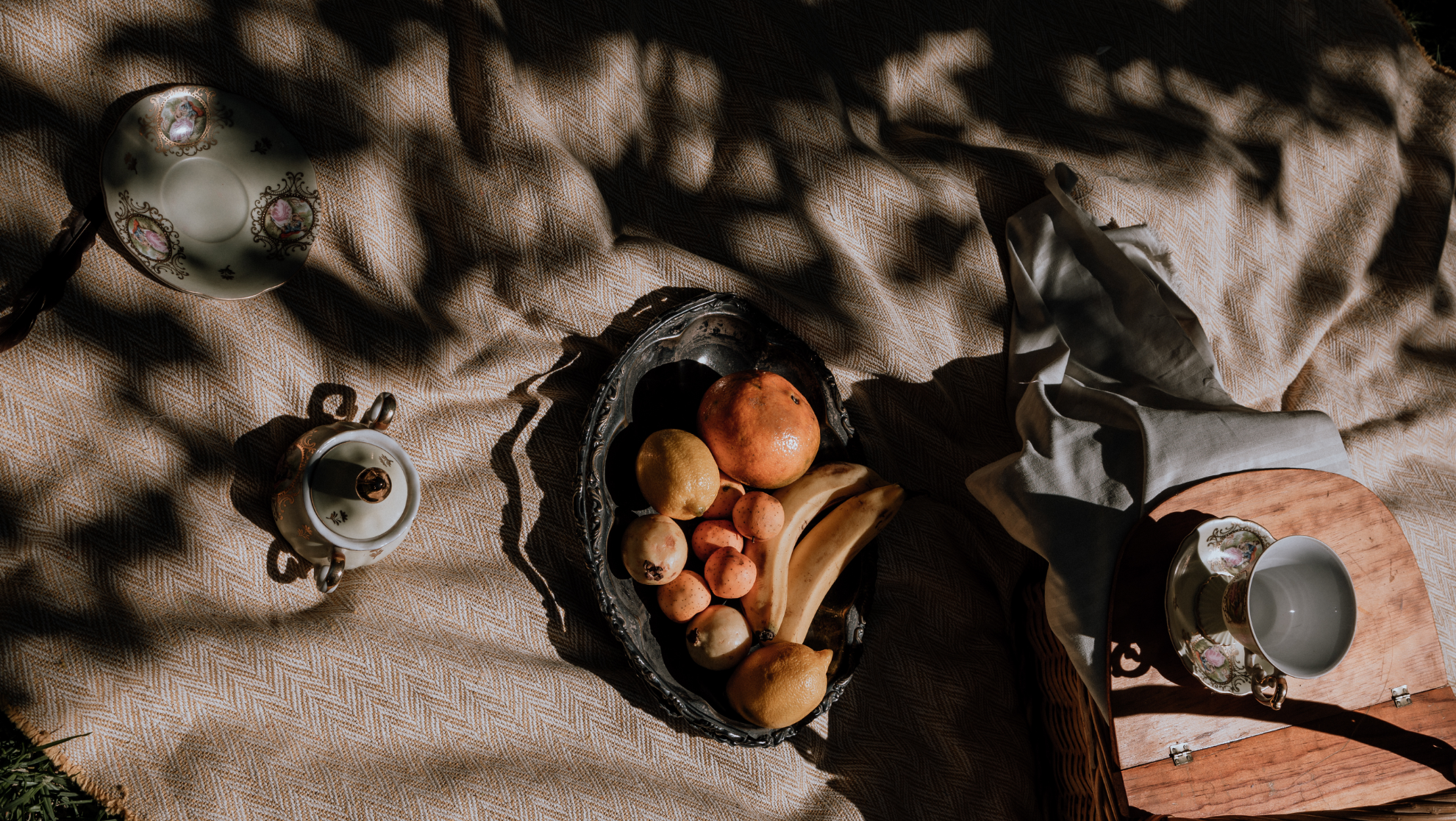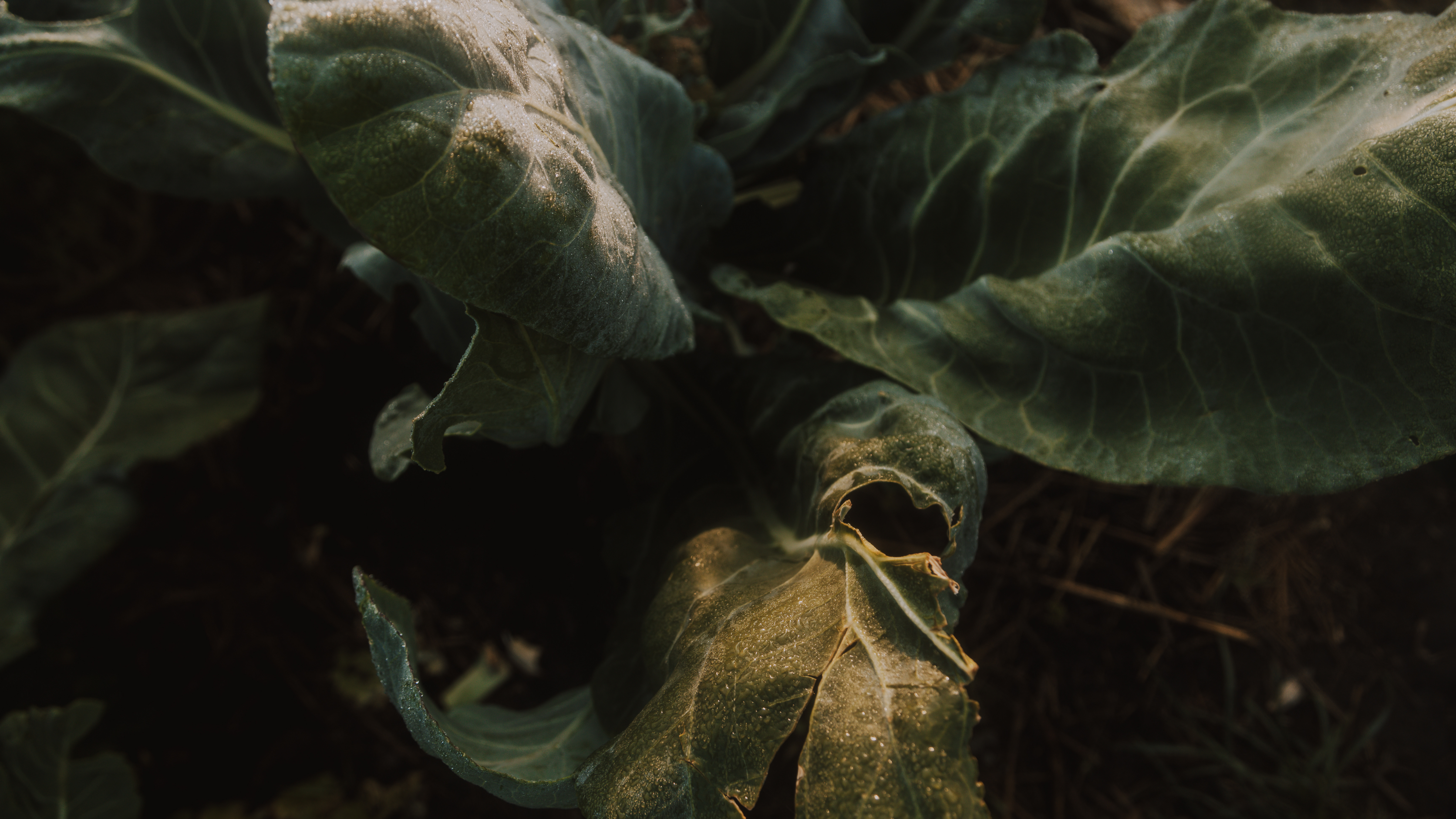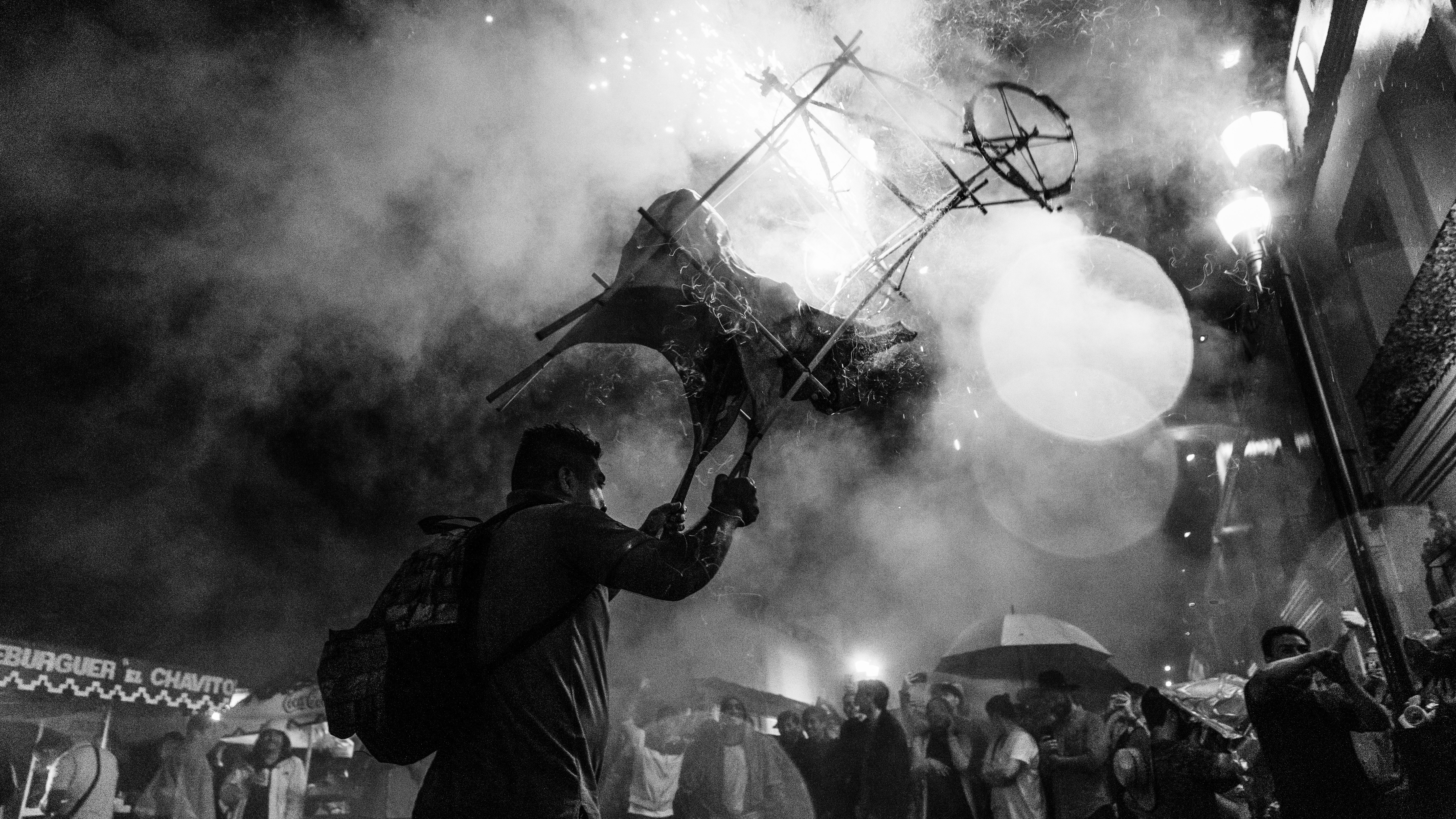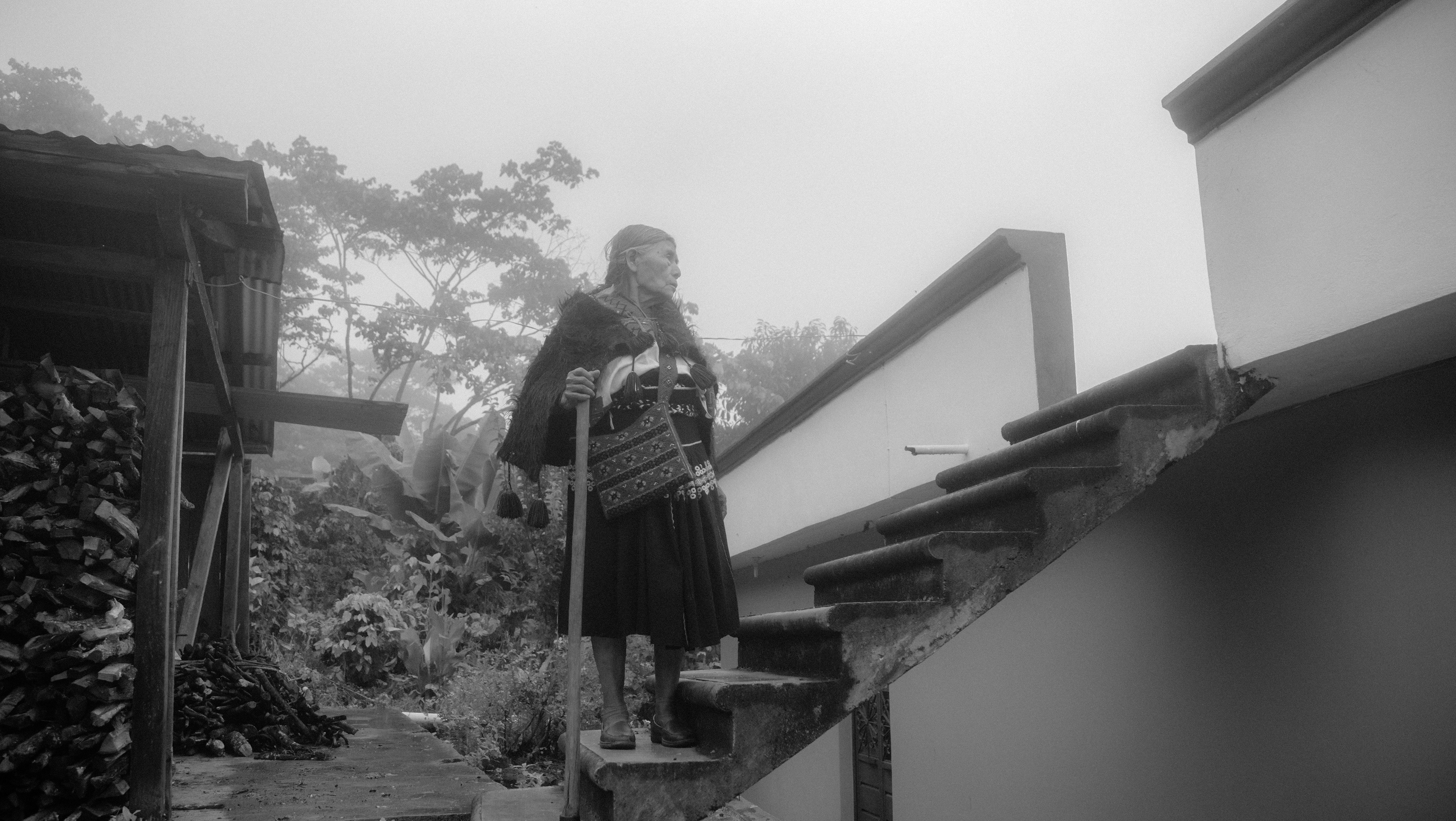January 2019, Laguna Chabela, Quintana Roo, México
Quintana Roo is the state where the most entrenched Mayan communities can be found, which preserve much of the traditions of their glorious ancestors. This story is about the Cahum Family in Laguna Chabela. I was able to meet this family through the sister, Cecilia Cahum. She is the only one in the family who, despite her strong roots, was able to study until college, where she has a degree in biology. She works during the week near Tulum on a conservation project to protect the Spider Monkey in the area. And on weekends, he visits his family in Laguna Chabela. Here, they receive small groups of tourists to give a "true Mayan experience" for $ 500 pesos per person, in which they take a walking tour through the jungle to the lagoon (which they preserve by not swimming in it and only entering the lagoon through a kayak to reach other parts of the jungle more easily). To cook afterwards a traditional Mayan meal; "Chicken Pibil in Pib", which is a chicken in a pot with onion, tomato and spices, cooked for several hours underground, covered with banana leaves, wood, rocks and soil.
During my visit, I found a jaguar's footprint which had passed through one of the paths between the brothers' houses. I got on the kayak to tour the lagoon, with a feeling of peace and presence at the time I was experiencing, while photographing the family. With great pride, they taught me how they lived, from inside their home, their orchards, their house for beekeeping, their pib oven, how they built Cecilia's house, how Grandma prepared the sauces and tortillas for food with her bare feet. Feet connected to the land where she has lived all her life. And this is what I understood from this family, about that connection with the earth and nature that we humans share. Which can help us understand that we are one with Mother Earth, that we need it to be grateful and respectful as an act of honor and love towards ourselves and other human beings.
The future of the "Modern Maya" is uncertain. According to "The Nature Conservancy" of Mexico; “One of the objectives of the cultural and tourist project of the Mayan World is precisely to give the heirs of a magnificent past, the possibility, with tourism, to maintain their millenary customs and, at the same time, allow them to reach a standard of living worthy of representatives of a culture that fills the nations where it flourished with pride.”
In Mexico, almost half of the forest areas belong to the communities. In the Mayan Jungle of the Yucatan Peninsula, this proportion increases to 61%, indicating that rural communities, whose livelihoods depend heavily on this diverse ecosystem, have the capacity to make decisions to define their destiny. However, they face numerous challenges. The effects of climate change, as well as an increase in touristic developments in the area, which, endanger this vulnerable landscape and people. In large part, the "Mayan Jungle" survives because it is still deeply connected with cultures and the productive practices of rural communities of indigenous descent.
I hope that with this small photographic exhibition, I can show Mexico and the world that the Mayan culture is not the past, but a present with validity that lives and beats in each of the members of that culture of Mexico today . In which they study, work and contribute their talent and effort to the development of their communities, the preservation of nature, their traditions, and the country.

